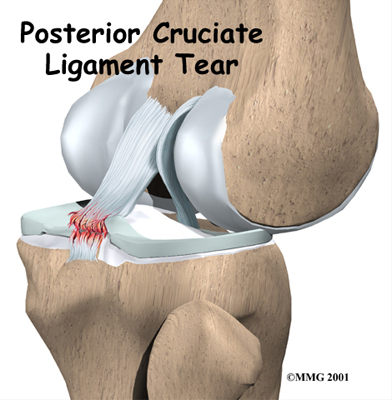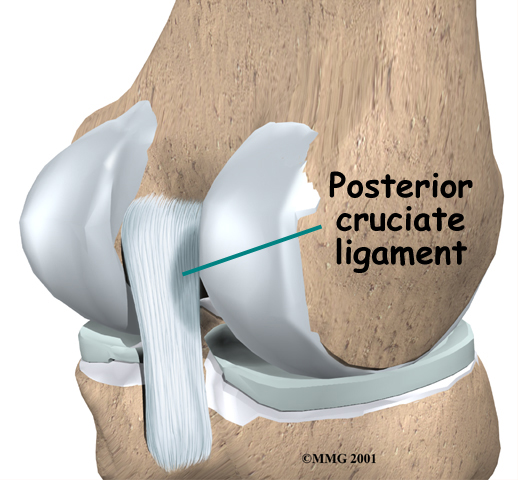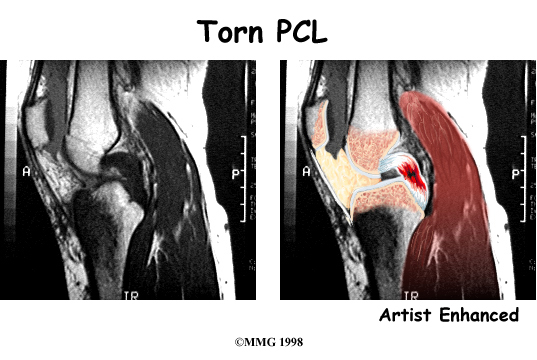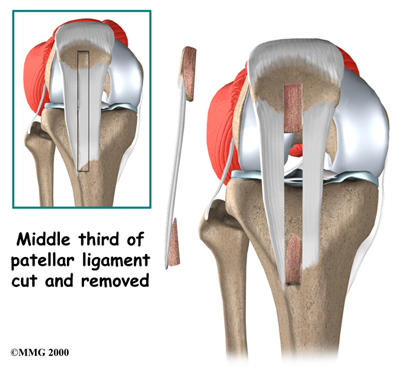Non-surgical Rehabilitation
At Next Step Physio, initial treatment for a PCL injury focuses on decreasing pain and swelling in the knee. Rest and mild pain medications, such as acetaminophen, can help decrease these symptoms. Our therapist may advise use of a long-leg brace and crutches at first to limit pain. Most patients are given the okay to put a normal amount of weight down while walking.
Less severe PCL tears are usually treated with a progressive rehabilitation program. Patients intending to return to high-demand activities may require a functional knee brace before returning to these activities. These braces are designed to replace knee stability when the PCL doesn't function properly. They help keep the knee from giving way during moderate activity, but they can give a false sense of security and won't always protect the knee during sports that require heavy cutting, jumping, or pivoting. These braces are not the type you can buy at the drugstore. Most physiotherapists will recommend wearing a brace for at least one year after a reconstruction, so even if you decide to have surgery, a brace is probably a good investment.
When you visit, Next Step Physio, our physiotherapist will treat your swelling and pain with the use of ice, electrical stimulation, and rest periods with your leg supported in elevation.
We will use exercises to help you regain normal movement of joints and muscles. Range-of-motion exercises should be started right away with the goal of helping you swiftly regain full movement in your knee. These include the use of a stationary bike, gentle stretching, and careful pressure applied to the knee by the physiotherapist.
Our therapist will also give you exercises to do for improving the strength of the quadriceps muscles on the front of the thigh. As your symptoms ease and strength improves, we will guide you in specialized exercises to improve knee stability.
Nonsurgical treatment of an injured PCL will typically last six to eight weeks. You will be able to return to your sport activities when your quadriceps muscles are back to near their normal strength, your knee stops swelling intermittently, and you no longer have problems with the knee giving way.
Post-surgical Rehabilitation
You may use a continuous passive motion (CPM) machine immediately after your operation to help the knee begin to move and to alleviate joint stiffness. The machine straps to the leg and continuously bends and straightens the joint. This continuous motion is thought to reduce stiffness, ease pain, and keep extra scar tissue from forming inside the joint.
Our physiotherapist may also have you wear a protective knee brace for up to six weeks after surgery. You'll probably use crutches for two to four weeks in order to keep your knee safe and will probably be instructed to put only a limited amount of weight down while you're up and walking.
Patients usually take part in formal physiotherapy after PCL reconstruction. The first few physiotherapy treatments are designed to help control the pain and swelling from the surgery. Therapists will begin to focus on range of motion exercises within three weeks. They take care to avoid letting the tibia sag back under the femur, as this can put strain on the healing graft.
Strengthening exercises for the quadriceps muscle on the front of the thigh are safe to begin right away. Muscle stimulation and biofeedback, which both involve placing electrodes over the quadriceps muscle, may be needed at first to get the muscle going again and help retrain it. As the rehabilitation program evolves, our physiotherapist will choose more challenging exercises to safely advance the knee's strength and function.
When you get full knee movement, your knee isn't swelling, and your strength is improving, you'll be able to gradually get back to your work and sport activities. Our physiotherapist may prescribe the use of a functional brace for athletes who intend to return quickly to their sport.
Ideally, you'll be able to resume your previous lifestyle activities. However, we usually advise athletes to wait at least six months before returning to their sport. And most patients are encouraged to modify their activity choices.
Overall, although recovery time varies, you will probably be involved in a progressive rehabilitation program for four to six months after surgery to ensure the best result from your PCL reconstruction. In the first six weeks following surgery, you can expect to see the physiotherapist about two to three times a week. If your surgery and rehabilitation go as planned, it is possible that you may only need to do a home program and see your therapist every few weeks over the four to six month period.
Next Step Physio provides services for physiotherapy in Edmonton.





 Failure to diagnose a PCL injury can be a major cause of failure of surgery to repair a ruptured anterior cruciate ligament (ACL). The doctor may order X-rays of the knee to rule out a fracture. Ligaments and tendons do not show up on X-rays.
Failure to diagnose a PCL injury can be a major cause of failure of surgery to repair a ruptured anterior cruciate ligament (ACL). The doctor may order X-rays of the knee to rule out a fracture. Ligaments and tendons do not show up on X-rays.
